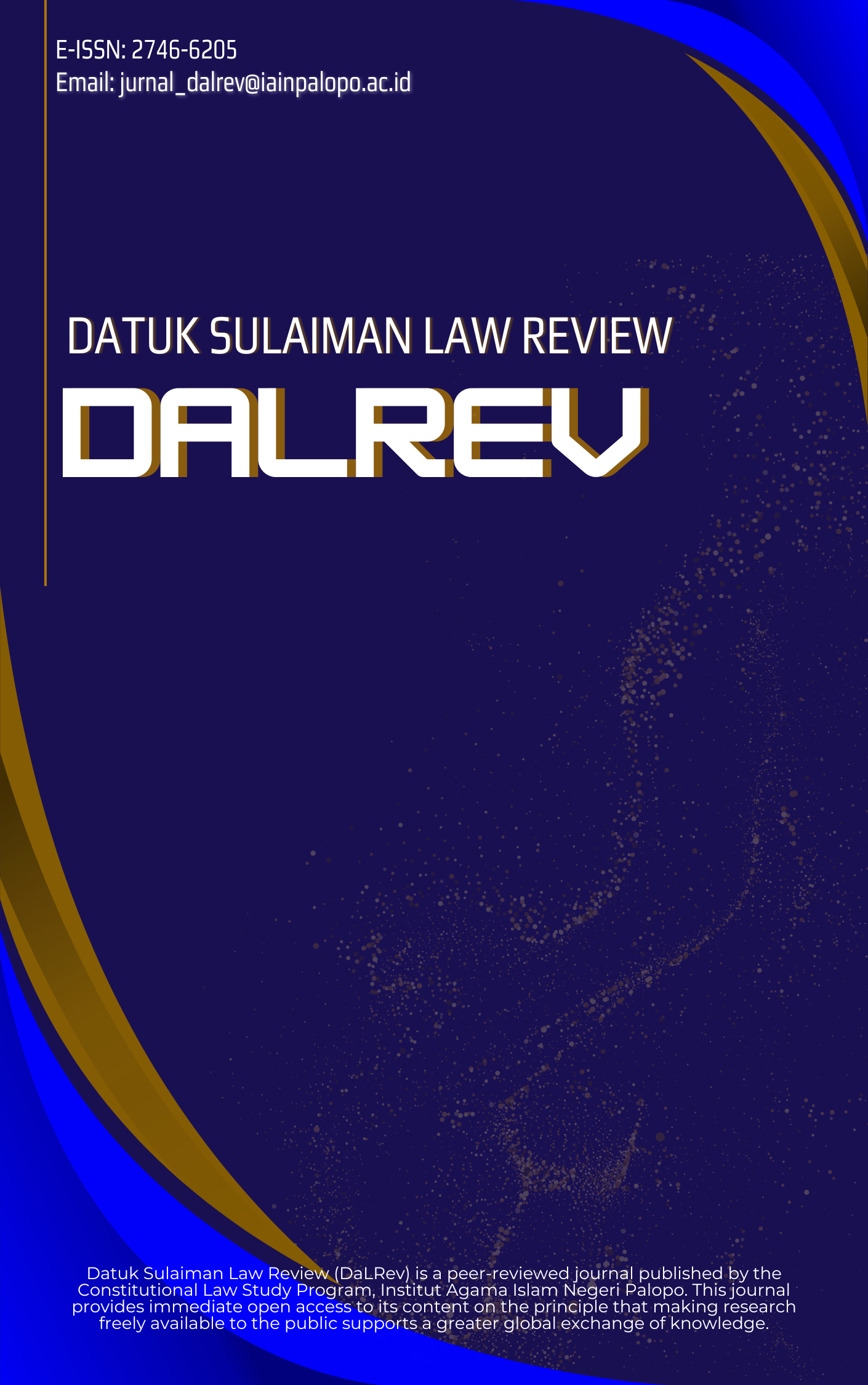TINDAK PIDANA KORUPSI PENYALURAN DANA BANTUAN SOSIAL COVID-19 DITINJAU DARI FIQH SIYASAH
DOI:
https://doi.org/10.24256/dalrev.v4i1.5521Abstrak
This study aims to determine the accountability for the criminal act of corruption in the Covid-19 social assistance fund, efforts to overcome the criminal act of corruption in the Covid-19 social assistance fund, and review of fiqh siyasah against the criminal act of corruption in the Covid-19 social assistance fund. The type of research used is normative legal research, with a normative approach and a juridical approach (siyasah dusturiyah). The data collection technique used is library research technique. The results of this study indicate that accountability for criminal acts of corruption in the Covid- 19 social assistance fund is included in the category of forms of corruption that are detrimental to the state with the intention of enriching themselves so that perpetrators of corruption can be charged with criminal sanctions or even threatened with the death penalty as stated in Article 2 of Law No. 20 of 2001 amendments to the Law of the Republic of Indonesia No. 31 of 1999. To minimize the occurrence of corruption in the Covid-19 social assistance funds, preventive and repressive efforts were carried out. The criminal act of corruption in the Covid-19 social assistance fund can be categorized as an act of betrayal of the mandate and is also an unjust act because it is a form of deviation from the objectives of sharia maqasid such as religious protection (hifdz ad-din), protection of the soul (hifdz an-nafs), protection of of reason (hifdz aql), protection of offspring (hifdz an-nasab), and protection of property (hifdz al-mal).
Unduhan
Diterbitkan
Cara Mengutip
Terbitan
Bagian
Citation Check
Lisensi
Hak Cipta (c) 2023 Selvia Labeda, Ulfa Ulfa

Artikel ini berlisensiCreative Commons Attribution-ShareAlike 4.0 International License.
Authors retain copyright and grant the journal right of first publication with the work simultaneously licensed under an Attribution-ShareAlike 4.0 International (CC BY-SA 4.0) (https://creativecommons.org/licenses/by-sa/4.0/) that allows others to share the work with an acknowledgement of the work's authorship and initial publication in this journal.
Authors are able to enter into separate, additional contractual arrangements for the non-exclusive distribution of the journal's published version of the work (e.g., post it to an institutional repository or publish it in a book), with an acknowledgement of its initial publication in this journal.
Authors are permitted and encouraged to post their work online (e.g., in institutional repositories or on their website) prior to and during the submission process, as it can lead to productive exchanges, as well as earlier and greater citation of published work (See the Effect of Open Access)














